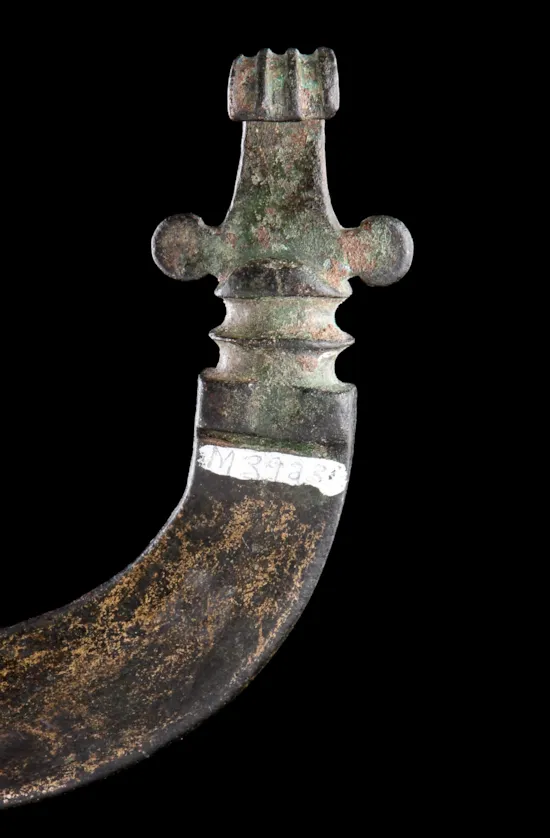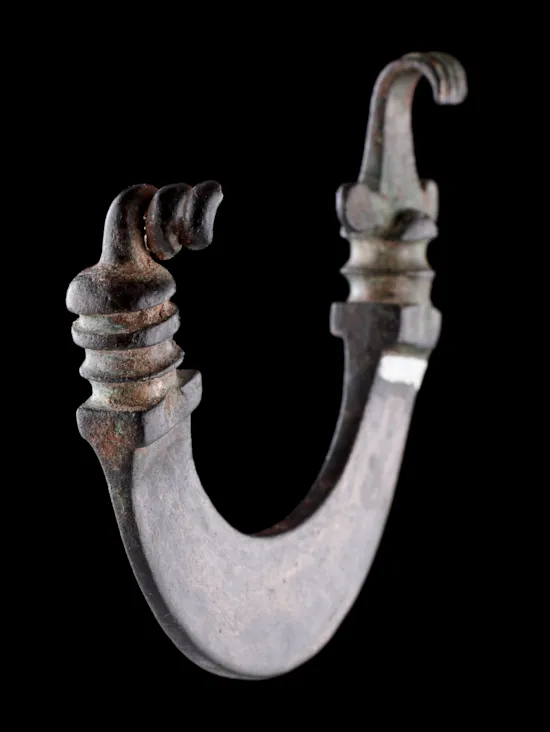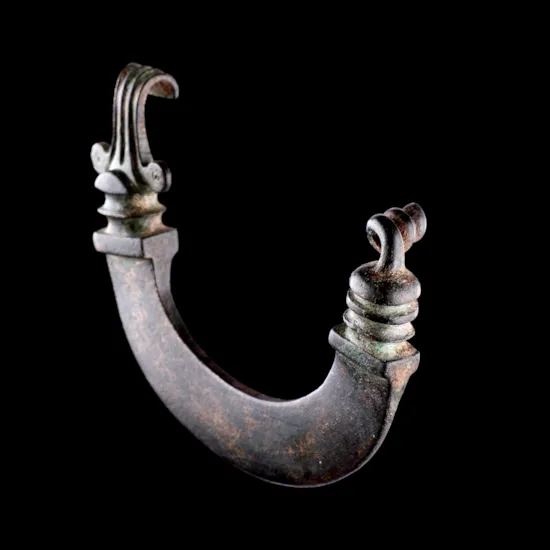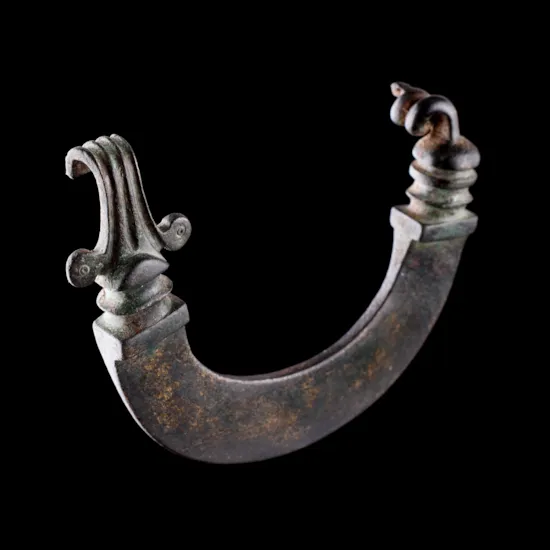Ancient Near Eastern Phrygian Bronze Fibula
An Ancient Near Eastern Phrygian Bronze Fibula of Semi-Circular Outline with Thick Flat Bow-Shaped Decorative Catch Plate and Shaped Mouldings
The clasp now missing
Ancient greenish brown smooth patina
Inventory no: M39231 to reverse
8th Century BC
Size: 8cm high, 10.5cm wide, 1cm deep - 3 ins high, 4 ins wide, ¼ ins deep
The clasp now missing
Ancient greenish brown smooth patina
Inventory no: M39231 to reverse
8th Century BC
Size: 8cm high, 10.5cm wide, 1cm deep - 3 ins high, 4 ins wide, ¼ ins deep
An Ancient Near Eastern Phrygian Bronze Fibula of Semi-Circular Outline with Thick Flat Bow-Shaped Decorative Catch Plate and Shaped Mouldings
The clasp now missing
Ancient greenish brown smooth patina
Inventory no: M39231 to reverse
8th Century BC
Size: 8cm high, 10.5cm wide, 1cm deep - 3 ins high, 4 ins wide, ¼ ins deep
The clasp now missing
Ancient greenish brown smooth patina
Inventory no: M39231 to reverse
8th Century BC
Size: 8cm high, 10.5cm wide, 1cm deep - 3 ins high, 4 ins wide, ¼ ins deep
According to the classical historian Strabo, Phrygia was famous for its wine and ‘brave and expert’ horsemen. He states that the King was known as ‘Midas’ and reigned from 720 BC to 695 BC when the country was at the peak of its power. An Assyrian inscription mentioning ‘Mita’ dated to 709 BC suggests Phrygia and Assyria had struck a truce around this time. Midas had close trade links with the Greeks and married an Aeolian Greek princess. In the capital city of Gordium a system of writing in the Phrygian language was developed using a Phoenician derived alphabet similar to Greek. The Iliad names the homeland of the Phrygians as on the banks of the Sangarius river, the third longest river in modern Turkey and one of the principal rivers of Asia Minor in classical antiquity, and Gordium remained the centre of the country throughout its history. The city has become one of Turkey’s most extensive archaeological sites with digs revealing a tomb popularly believed to be that of King Midas. Excavations have confirmed the capital's violent destruction around 675 BC. When the Phrygian Kingdom was overwhelmed and sacked by Cimmerian invaders, Strabo reports that Midas committed suicide by drinking bull’s blood.
Ex Julia Schottlander acquired London Art Market early 1980’s
Ex Lord McAlpine of West Green collection
Ex Private London collection Seward Kennedy
Similar examples illustrated and published in the Ashmolean Museum Oxford Exhibition ‘Antiquities from Europe and the Near East from the Collection of the Lord McAlpine of West Green 1987 page 135 17.42.’
Ex Lord McAlpine of West Green collection
Ex Private London collection Seward Kennedy
Similar examples illustrated and published in the Ashmolean Museum Oxford Exhibition ‘Antiquities from Europe and the Near East from the Collection of the Lord McAlpine of West Green 1987 page 135 17.42.’
Ancient Near Eastern Phrygian Bronze Fibula














